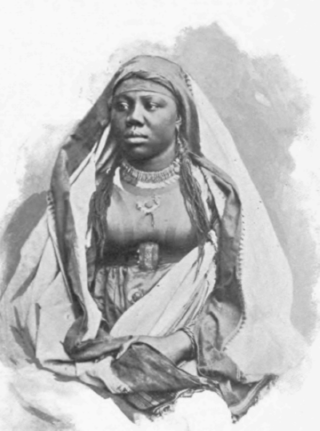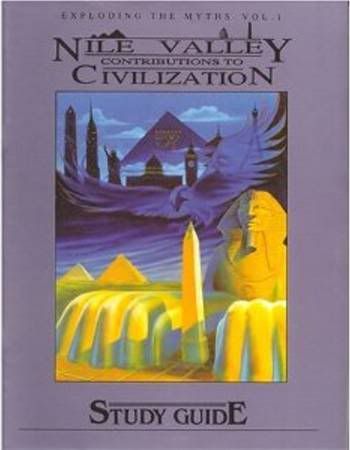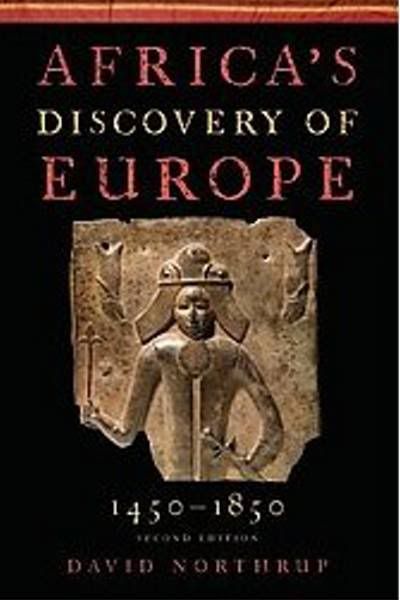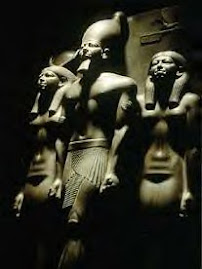

Shem Hotep ("I go in peace").

Louis Seymour Bazett Leakey (L.S.B. Leakey) (August 7, 1903 – October 1, 1972) was a Kenyan archaeologist and naturalist whose work was important in establishing human evolutionary development in Africa.
Origin of Man: "Human Beginnings"
Dr. Albert Chuchward, distinguished scholar, anthropologist, and archeologist theorizes that the earliest member of the human species appeared about two million years ago in the Great Lakes region of Central Africa. This early human species eventually spread over the entire continent. Many individuals in Dr. Churchward's field generally agree with his theory, including Dr. L.S.B. Leakey. In 1963, Leakey found primitive human fossils, 1.2 million years old in East Africa.
Further discussion on this theory was published in Newsweek Magazine, January 11, 1988, in an article called "The Search for Adam & Eve." The subject was about the collection and testing of a global assortment of genes. A trail of DNA was found that led them to a single woman from whom we all descended. The evidence indicates that Eve lived in Sub-Saharan Africa, between 80,000 and 200,000 years ago. These descendants began migrating from their original homeland, inhabiting the whole world.
The African ancestry of the human race is now generally accepted as a fact. Dr. Eric Higgs, of Cambridge University has made a study of the migration of ancient men, and claims that the first man of Europe came to the continent from central and east Africa about 200,000 years ago. Professor Chester Chard, of the University of Wisconsin, has studied the routes of early men who left Africa to colonize the rest of the world, and he has concluded that there were four prehistoric migration routes from Africa to Europe.
Professor Leakey was asked if any of these early Africans reached the New World, and his answer was as follows: "It is inconceivable that man, the most curious and mobile of all animals, would not have come to America when the elephants, the tapirs and the deer came from Asia. … Man spread out from Africa to Asia to Europe. It is inconceivable that he would stay out of America."
In 1988, the findings of anthropologists Christopher B. Stringer and Peter Andrews, of the British Museum of Natural History further confirmed the single-origin theory, that Homo Sapiens had evolved from an African Homo Erectus group, 200,000 years ago who had later migrated to Asia and Europe about 100,000 later. Both scientists contend that fossil evidence supports their single-origin theory. They also note that the oldest modern looking human fossils, from Western Europe, are only 35,000 years old.
Human skull remains, 2.4 million years old were found in Kenya in 1965. This new date places the origin of human beings within the period of major climate change, a global cooling is already believed to have caused other mammals to undergo dramatic evolutionary change. Geologist, John Martyn discovered the fossils while working in the Chemeron Beds in Kenya's Great Rift Valley. The date of the skulls was determined using a new scientific method called Agron.
These discoveries help to validate the fact that mankind originated in Africa. Humans born around the Great Lakes region, so very close to the equator, would have been very heavily pigmented. Gloger's Law states that warm-blooded animals born in such an equatorial region as the Great Lakes and Kenya will secrete a dark pigment called eumelanin (melanin).

Human Migration
The first humans came from the region of the Great Lakes in East Africa, approximately 200,000 years ago. These small people were known as the Twa people (or Pygmies). These earliest humans migrated following the Nile River, north, south, east, and west, creating the first civilization. A noted German scholar, Herr Enger Georg states:
A splendid era of blacks seems to have preceded all later races. There must once have been a tremendous Negro expansion, since the original masters of all the lands between Liberia and the Cape of Good Hope and East India were primitive and probably dwarfed black men.
Blacks were the dark skinned, curly haired Kushites. Blacks inhabited Sumeria and Babylon prior to Christianity and Islam. In India, the kingdom of the Dravidian monarchs existed until the period of written history. Many thousands of years before Christ, great, great cultures bloomed in the bark rich valleys of the Yang-tse-kiang, the Ho, Indus, Euphrates, Nile, and Congo rivers, while Oceania, Central America, and the highlands of the Andes were centers of human settlements.
A number of scientists and scholars in ancient and modern times have concluded that the world's first civilization was the creation of a people known as the Ethiopians. The name "Ethiopian" we owe to the Greeks. When they encountered the Africans, they called them "burnt faces."
In Greek, the word for burnt was ethios, and the word for face was opa. Together they became Ethiopian. We learn from the work of Homer and Herodotus that all of the people of the following areas were considered Ethiopians: the Sudan, Egypt, Arabia, Palestine, Western Asia, and India.
These black civilizations have been traced back to ancient Egypt, and have spread from the Nile to Crete and Western Asia, traveling through South Asia to Indonesia, and the islands of the Pacific and on to South and Central America, i.e., the Mayas, Incas, and Aztecs.

Professor Arthur G. Brodeur (Nile Valley Civilization)
The Nile Valley has been called the cradle of civilization. The first inhabitants of this area were the Ethiopians, a black skinned people whose descendants entered the valley through Nubia following the Nile River. Thebes and Moroe were among the first cities established and became the religious centers of Upper Egypt. The practice of Ammonism or the worship of the God Ammon was the major religion (Ammon being the God of Gods).
It is said that the ancient Egyptians were a colony sent from Ethiopia by the god Osiris who was regarded as the leader of the colony. The Edfu text, an ancient scroll text, is another important source document on the origin of the Nile Valley. The inscription found at the temple of Horus at Edfu tells us that the origin of Egyptian civilization was taken from the south by a band of invaders led by King Horus.
This ancient culture has been traced back to the area of Somaliland, and quite possibly had its origin on the shores of the Great Lakes in Central Africa. Ruins have been found in Somaliland similar to the buildings in early Egypt.
Professor Arthur G. Brodeur asserts that the ancestors of the southern Egyptians came originally from Nubia. These earliest tribes of Egyptians were Hamites and Kushites (of Ethiopian ancestry).
Approximately 6000 years ago, the ancient Egyptians became conquerors and rulers of Upper and Lower Egypt. The first Pharaoh of Egypt was Aha Mena or Menes, whose reign, according to various Egyptologist began anywhere from 5776 B.C.E., to 3300 B.C.E. In 1914 A.D., Sir Wallis Budge, late Keeper of the British Museum, stated that the earliest dates proposed by any Egyptologist are most likely correct.
The dynastic period lasted from about 6000 B.C. until 300 B.C. These dynastic periods were divided into four main groups. The Old Kingdom (Dynasties 1–4), The Middle Kingdom (Dynasties 11–14), The Empire Dynasties 18–20), and The Saite Age (Dynasty 26). In the 27th Dynasty, the country was overrun by the Persians and since that time Egypt has rarely been free of foreign rule.
Prior to the invasion of the Greeks in 325 B.C., Egypt was called Chem (kmt) or Ta-Merry. A very high level of civilization existed in Chem, the foundation of all of the arts and sciences of today were perfected at that time: astronomy, music, medicine, chemistry, geometry, calculus, art, rhetoric, etc. All of the aforementioned areas of learning reached their zenith in the ancient Mystery School of the Egyptians. Also, the origin of all the world's religions along with their spiritual, moral, and ethical codes all had their beginnings in the Egyptian mystery system schools (universities, temples, and lodges).


African Civilizations in Europe
The Caucasoid type of humanity is believed to have resulted from an original Afrocoid stock. Around 40,000 B.C., the Grimaldian Africoids inhabited Southwestern Eurasia (Russia). The Caucasoid type is said to have resulted from a phenomenon associated with Vitamin D metabolism.
One of the most vital functions of the skin is the production of Vitamin D from the biochemical substance called 7-dehydrocholesterol, through interaction with the ultraviolet light of the sun. This is a critical process for Vitamin D, since it is the vitamin that is absolutely necessary for the proper mineralization of the bones.
In the ice-age environment, whitened skin out of an original Africoid stock was better adapted to Vitamin D production. The development of this new human stock was made possible by prolonged isolation from other human groups, leading to inbreeding within the albinoid group, which continually heightened the albinoid characteristics.
Melanized skin (skin with dark pigmentation) in a tropical climate is necessary to protect the cells from the ultraviolet rays of the sun, and from the deadly effects of skin cancer. This also means that most of the ultraviolet light that would normally go into producing Vitamin D, is screened out. However, because of the intensity of the tropical sun, enough ultraviolet light penetrates the melanin barrier to produce a sufficient amount of Vitamin D for the bones.
In a frigid northern climate, with many sunless days, and shorter hours of daylight, melanized (dark or black) skin becomes a liability. In a colder climate, the amount of sunlight penetrating melanized skin for the production of Vitamin D is drastically reduced.
The fossil remains of these ancient Grimaldi Africans were discovered in a cave near Mentone, France, layers below the Cro-Magnon man, in an area called Eurasia. These were the same small Africans known as the Twa (also called Pygmies), whose descendants are in Southern Africa today, best known as the Hottentot. Other African fossil remains of a similar age have been found in Brittany, Switzerland, Central Europe, and Bulgaria.















No comments:
Post a Comment